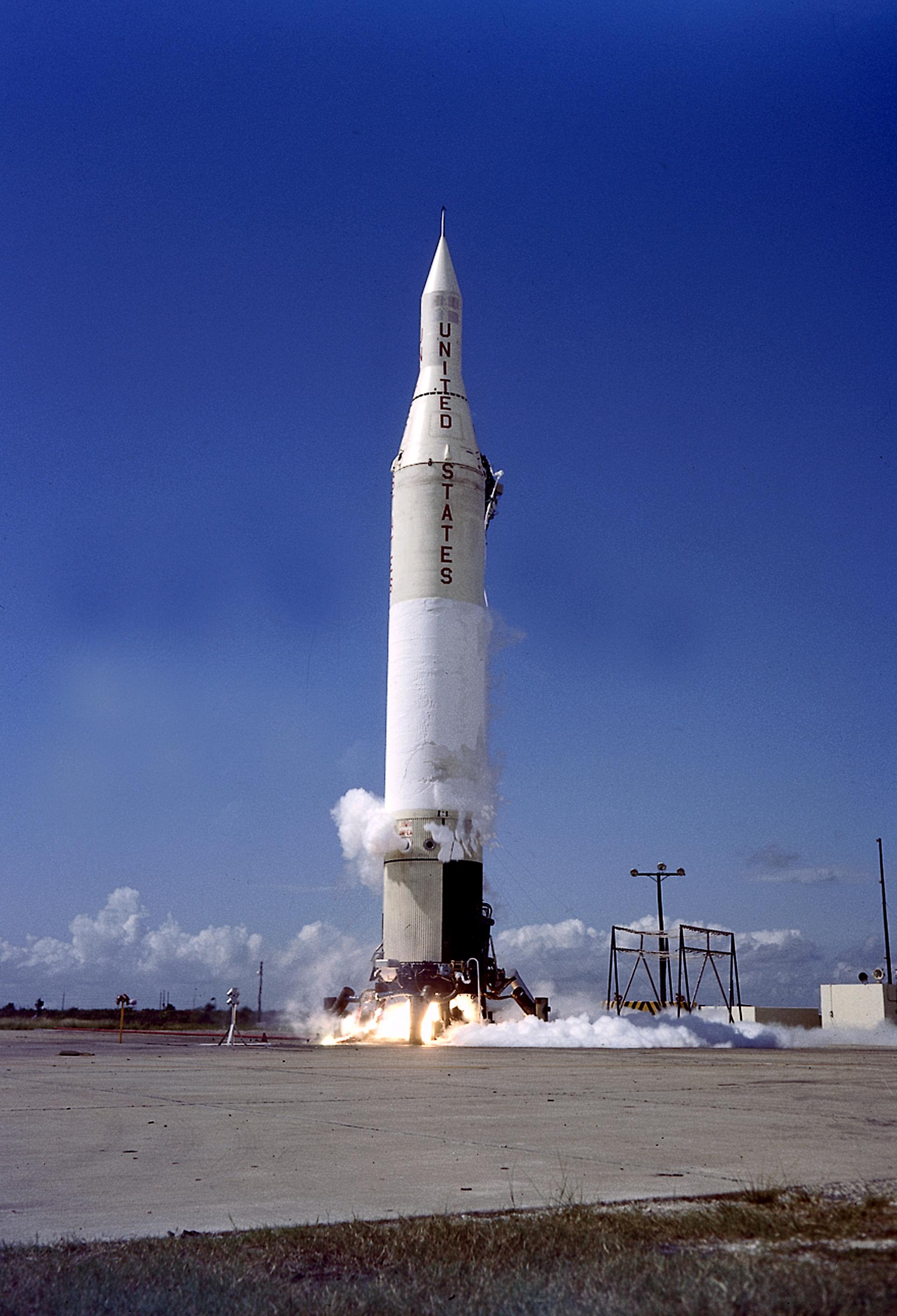
Juno II
In-activeArmy Ballistic Missile Agency (ABMA)
Dec. 6, 1958
Description
Juno II was an American space launch vehicle used during the late 1950s and early 1960s. It was derived from the Jupiter missile, which was used as the first stage.
Specifications
-
Minimum Stage
3 -
Max Stage
4 -
Length
24.0 m -
Diameter
2.67 m -
Fairing Diameter
― -
Launch Mass
55.0 T -
Thrust
654.0 kN
Family
-
Name
Juno II -
Family
― -
Variant
― -
Alias
― -
Full Name
Juno II
Payload Capacity
-
Launch Cost
― -
Low Earth Orbit
41.0 kg -
Geostationary Transfer
Orbit
― -
Direct Geostationary
― -
Sun-Synchronous Capacity
―
Army Ballistic Missile Agency
Government
None
ABMAThe Army Ballistic Missile Agency was formed to develop the U.S. Army's first large ballistic missile. The agency was established at Redstone Arsenal on 1 February 1956, and commanded by Major General John B. Medaris with Wernher von Braun as technical director.
Juno II | S-45A
Army Ballistic Missile Agency | United States of AmericaCape Canaveral SFS, FL, USA
May 24, 1961, 7:48 p.m.
Juno II | Explorer 11
Army Ballistic Missile Agency | United States of AmericaCape Canaveral SFS, FL, USA
April 27, 1961, 2:16 p.m.
Juno II | S-45
Army Ballistic Missile Agency | United States of AmericaCape Canaveral SFS, FL, USA
Feb. 25, 1961, 12:13 a.m.
Juno II | Explorer 8
Army Ballistic Missile Agency | United States of AmericaCape Canaveral SFS, FL, USA
Nov. 3, 1960, 5:23 a.m.
Juno II | NASA S-46
Army Ballistic Missile Agency | United States of AmericaCape Canaveral SFS, FL, USA
March 23, 1960, 1:35 p.m.
Juno II | Explorer 7
Army Ballistic Missile Agency | United States of AmericaCape Canaveral SFS, FL, USA
Oct. 13, 1959, 3:30 p.m.
Status: Launch Successful
Mission:
Explorer 7 was designed to measure solar x-ray and Lyman-alpha flux, trapped energetic particles, and heavy primary cosmic rays. Secondary objectives included collecting data on micrometeoroid penetration, molecular sputtering and studying the Earth-atmosphere heat balance.
Low Earth OrbitJuno II | Beacon
Army Ballistic Missile Agency | United States of AmericaCape Canaveral SFS, FL, USA
Aug. 15, 1959, 12:31 a.m.
Juno II | NASA S-1
Army Ballistic Missile Agency | United States of AmericaCape Canaveral SFS, FL, USA
July 16, 1959, 5:37 p.m.
Status: Launch Failure
Mission:
The S-1 satellite was a geoscience satellite equipped with a suite of scientific instruments to study the environment around the Earth. It was destroyed 5 seconds into launch when the launch vehicle exploded due to an issue with the launch vehicles power supply.
Elliptical OrbitJuno II | Pioneer 4
Army Ballistic Missile Agency | United States of AmericaCape Canaveral SFS, FL, USA
March 3, 1959, 5:10 a.m.
Juno II | Pioneer 3
Army Ballistic Missile Agency | United States of AmericaCape Canaveral SFS, FL, USA
Dec. 6, 1958, 5:44 a.m.
Falcon 9
Starlink Group 15-12
Space Launch Complex 4E - Vandenberg SFB, CA, USAA batch of 27 satellites for the Starlink mega-constellation - SpaceX's project for space-based Internet communication system.
Electron
Raise and Shine (RAISE-4)
Rocket Lab Launch Complex 1B - Rocket Lab Launch Complex 1, Mahia Peninsula, New ZealandRAISE-4 (RApid Innovative payload demonstration Satellite-4) is a Japan Aerospace Exploration Agency (JAXA) satellite for on-orbit demonstrations of …
Kuaizhou 11
DEAR-5
Launch Area 95A - Jiuquan Satellite Launch Center, People's Republic of ChinaDEAR-5 is a commercial in-orbit payload and micro-gravity experiments hosting spacecraft developed by Chinese commercial company AZSPACE for various …
Long March 12
SatNet LEO Group 16
Commercial LC-2 - Wenchang Space Launch Site, People's Republic of ChinaA batch of Low Earth Orbit communication satellites for the Chinese state owned SatNet constellation operated by the China Satellite Network Group. …
Falcon 9
Starlink Group 6-90
Space Launch Complex 40 - Cape Canaveral SFS, FL, USAA batch of 29 satellites for the Starlink mega-constellation - SpaceX's project for space-based Internet communication system.

